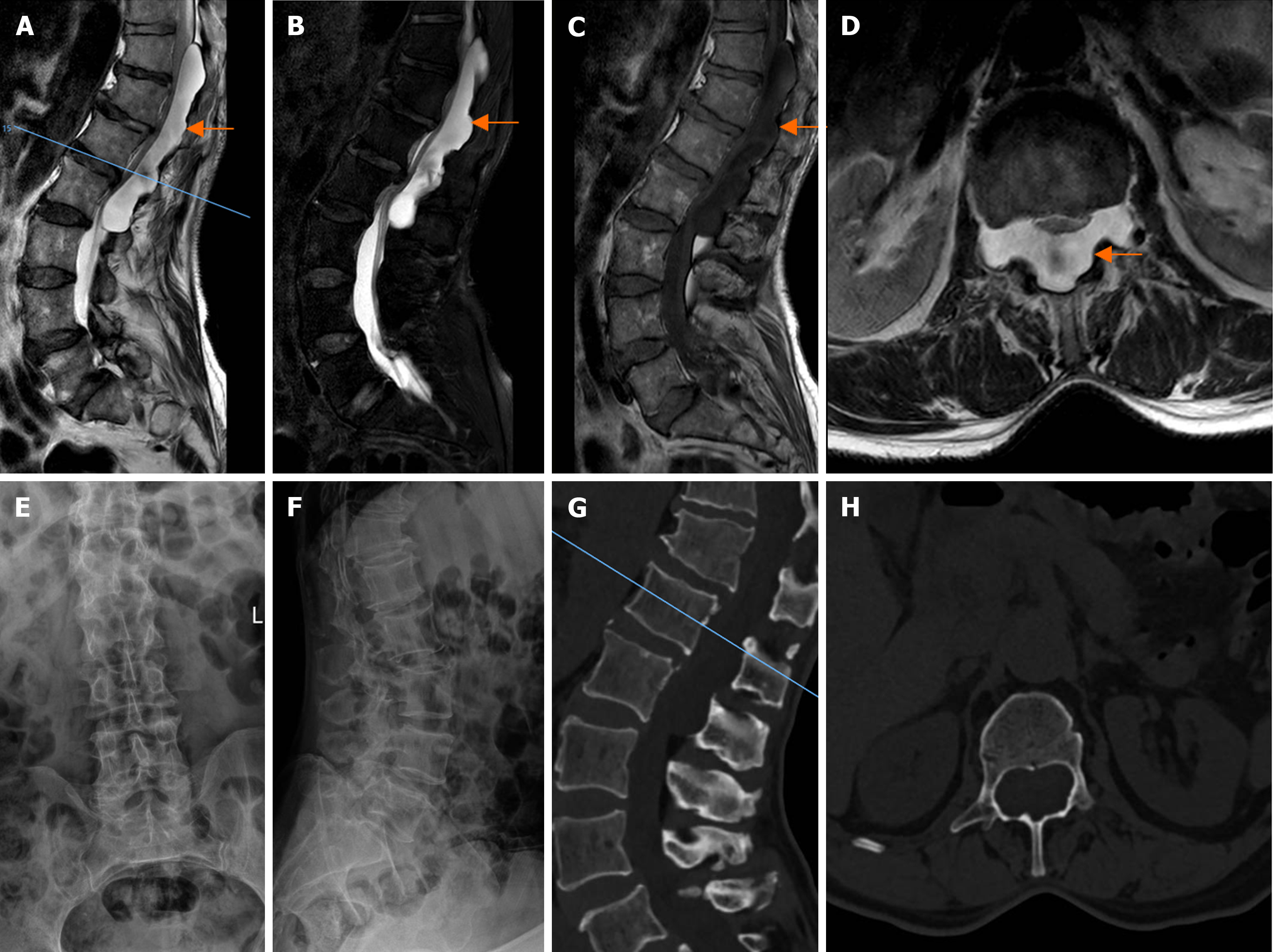Copyright
©The Author(s) 2024.
World J Clin Cases. Sep 6, 2024; 12(25): 5798-5804
Published online Sep 6, 2024. doi: 10.12998/wjcc.v12.i25.5798
Published online Sep 6, 2024. doi: 10.12998/wjcc.v12.i25.5798
Figure 1 Preoperative imaging data of the patient.
A: Magnetic resonance imaging (MRI) sagittal showed a huge intradural mass in the spinal canal at the level of thoracic 11 lumbar 2; B: High signal in the pressure-lipid sequence; C: Low signal in T1WI; D: MRI axial T2WI showed a high signal in the intradural lesion in the spinal canal; E: Frontal X-ray showed lumbar spine degeneration; F: Lateral X-ray showed instability of T12; G: Computed tomography (CT) reconstruction of sagittal position showed enlarged spinal canal, and the pedicles, plates; H: CT transverse section showed enlargement of the spinal canal with thinning of the pedicle and vertebral plate.
- Citation: Sun SF, Wang XH, Yuan YY, Shao YD. Rare giant intradural epidural hemolymphangioma: A case report. World J Clin Cases 2024; 12(25): 5798-5804
- URL: https://www.wjgnet.com/2307-8960/full/v12/i25/5798.htm
- DOI: https://dx.doi.org/10.12998/wjcc.v12.i25.5798









